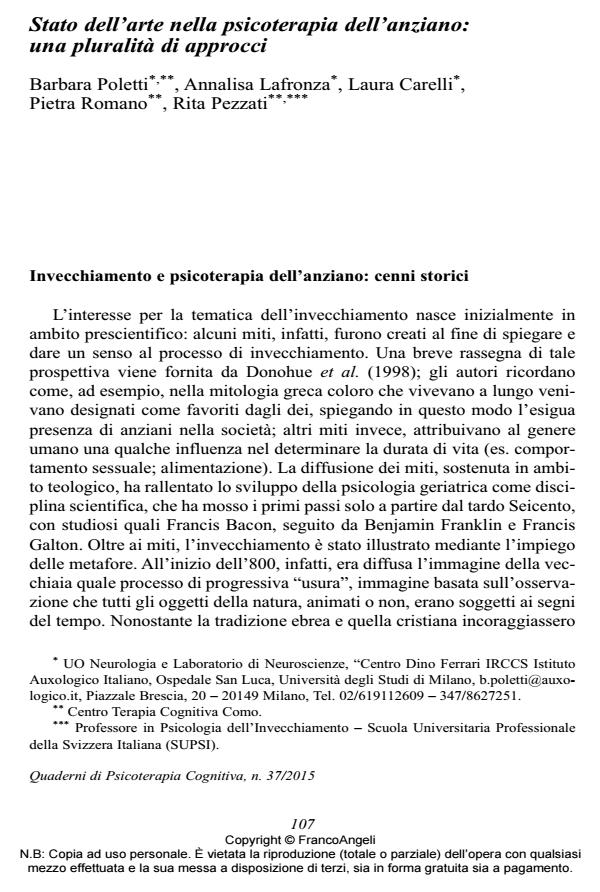State of the Art of Psychotherapy with older adults: a plurality of approaches
Journal title QUADERNI DI PSICOTERAPIA COGNITIVA
Author/s Barbara Poletti, Annalisa Lafronza, Laura Carelli, Pietra Romano, Rita Pezzati
Publishing Year 2015 Issue 2015/37
Language Italian Pages 60 P. 107-166 File size 283 KB
DOI 10.3280/QPC2015-037007
DOI is like a bar code for intellectual property: to have more infomation
click here
Below, you can see the article first page
If you want to buy this article in PDF format, you can do it, following the instructions to buy download credits

FrancoAngeli is member of Publishers International Linking Association, Inc (PILA), a not-for-profit association which run the CrossRef service enabling links to and from online scholarly content.
The present article describes the main approaches addressing mental disorders in the elderly. A brief presentation about Psychology of Aging, in its historical development between myths and science, and about theoretical and historical/cultural frame of psychotherapy with older adults, is first proposed. Then, the setting and clinical procedures, together with experimental findings obtained from studies about efficacy, are presented concerning the main approaches, such as Psychodinamic, Cognitive-Behavioral and Cognitive-Constructivist Therapies. Other relevant clinical models are also briefly illustrated, such as Interpersonal Therapy and Mindfulness that developed and implemented adjustements to traditional clinical procedures for the older adults’ care, and the Life Review Therapy. Finally, a summary of empirical evidence about the efficacy of interventions specifically tailored on patients with cognitive impairment, which affects persons with Mild Cognitive Impairment or dementia, is presented; among these, the Doll Therapy is described, addressed to persons at moderate-severe stages of dementia. Overall, the described studies depict a complex and articulated framework, which suggests the importance, shared by all the approaches, of adapting the clinical interventions to the specific features and particular needs of the older adults, with the purpose of endorsing resources and potentialities.
Keywords: Relational elderly psychotherapy, constructivist psychoterapy, cognitivebehavioral psychotherapy, psychoanalysis.
Barbara Poletti, Annalisa Lafronza, Laura Carelli, Pietra Romano, Rita Pezzati, Stato dell’arte nella psicoterapia dell’anziano: una pluralità di approcci in "QUADERNI DI PSICOTERAPIA COGNITIVA" 37/2015, pp 107-166, DOI: 10.3280/QPC2015-037007